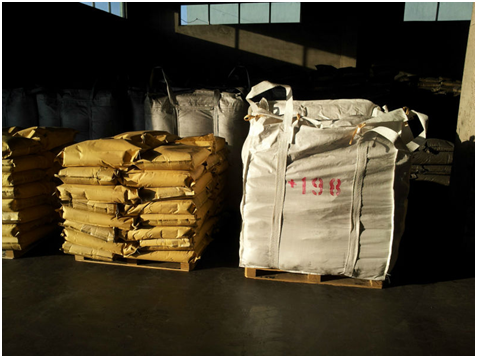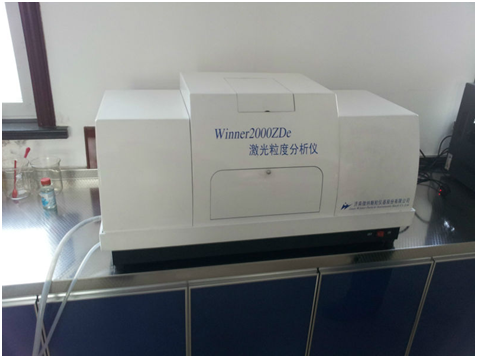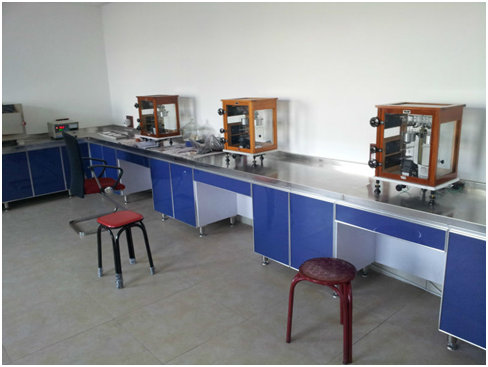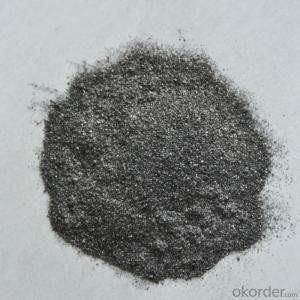Natural Flake Graphite Carbon Product For Industry
- Loading Port:
- Qingdao
- Payment Terms:
- TT OR LC
- Min Order Qty:
- 10 m.t
- Supply Capability:
- 5000000 m.t/month
OKorder Service Pledge
OKorder Financial Service
You Might Also Like
Specifications of Natural Flake Graphite:
F.C:80%min-98%min Size:+80mesh,+100mesh,-100mesh.
- Description & Application:
Widely applied to high quality fire resistance material and coating of metallurgy industry, hot working
material stabilizer of military industry, lead of light industry, carbon brush of electrical industry, electrode of
battery industry, and catalyzer and additive of fertilizer industry. After further process, scale graphite can be
made into the following high-tech products such as graphite colloidal graphite, graphite compacting material
and composite material, graphite products, and graphite anti-friction additive, which are becoming important
nonmetal mineral materials in every industry.
- Technical Specification:
ITEM | F.C %(min) | V.M %(max) | ASH %(max) | MOISTURE %(max) | SIZE |
-198 | 98 | 1.0 | 1.0 | 0.5 | -100mesh |
+198 | 98 | 1.0 | 1.0 | 0.5 | +100mesh |
-197 | 97 | 1.2 | 1.8 | 0.5 | -100mesh |
+197 | 97 | 1.2 | 1.8 | 0.5 | +100mesh |
-196 | 96 | 1.2 | 2.8 | 0.5 | -100mesh |
+196 | 96 | 1.2 | 2.8 | 0.5 | +100mesh |
-195 | 95 | 1.2 | 3.8 | 0.5 | -100mesh |
+195 | 95 | 1.2 | 3.8 | 0.5 | +100mesh |
-194 | 94 | 1.2 | 4.8 | 0.5 | -100mesh |
+194 | 94 | 1.2 | 4.8 | 0.5 | +100mesh |
-193 | 93 | 1.5 | 5.5 | 0.5 | -100mesh |
+193 | 93 | 1.5 | 5.5 | 0.5 | +100mesh |
-192 | 92 | 1.5 | 6.5 | 0.5 | -100mesh |
+192 | 92 | 1.5 | 6.5 | 0.5 | +100mesh |
-190 | 90 | 2.0 | 8.0 | 0.5 | -100mesh |
+190 | 90 | 2.0 | 8.0 | 0.5 | +100mesh |
-185 | 85 | 2.5 | 12.5 | 0.5 | -100mesh |
+185 | 85 | 2.5 | 12.5 | 0.5 | +100mesh |
-180 | 80 | 3.0 | 17.0 | 1 | -100mesh |
+180 | 80 | 3.0 | 17.0 | 1 | +100mesh |
+897 | 97 | 1.2 | 1.8 | 0.5 | +80mesh |
+896 | 96 | 1.2 | 2.8 | 0.5 | +80mesh |
+895 | 95 | 1.2 | 3.8 | 0.5 | +80mesh |
+894 | 94 | 1.2 | 4.8 | 0.5 | +80mesh |
+892 | 92 | 1.5 | 6.5 | 0.5 | +80mesh |
+890 | 90 | 2.0 | 8.0 | 0.5 | +80mesh
|





- Q:How does carbon contribute to global warming?
- Carbon contributes to global warming through the greenhouse effect. When carbon dioxide (CO2) and other greenhouse gases are released into the atmosphere through human activities like burning fossil fuels, deforestation, and industrial processes, they trap heat from the sun and prevent it from escaping back into space. This leads to an increase in the Earth's temperature, resulting in global warming and climate change.
- Q:What is carbon offsetting in the fashion industry?
- In the fashion industry, carbon offsetting refers to the act of compensating for the greenhouse gas emissions produced during the production, transportation, and disposal of clothing and accessories. This involves investing in projects or activities that reduce or eliminate an equal amount of carbon dioxide (CO2) from the atmosphere, thereby counterbalancing the emissions generated by the industry. Fashion has gained notoriety for its significant role in environmental degradation, with textile production, manufacturing processes, and transportation all contributing to carbon emissions. Carbon offsetting offers a means for fashion brands and companies to take accountability for their carbon footprint and strive towards reducing their environmental impact. There are various methods for implementing carbon offsetting in the fashion industry. One prevalent approach involves supporting renewable energy initiatives, such as wind farms or solar power plants, that generate clean energy and reduce reliance on fossil fuels. By investing in these projects, fashion brands can offset a portion of their emissions by supporting the production of renewable energy, which displaces the need for energy derived from fossil fuels. Another method of carbon offsetting involves reforestation or afforestation projects. Trees play a critical role in absorbing CO2 from the atmosphere, so planting trees or conserving existing forests can help offset emissions. Fashion companies can invest in projects that protect existing forests from deforestation or support initiatives that plant trees in areas affected by deforestation or land degradation. Furthermore, some fashion brands choose to offset their carbon emissions by investing in projects that capture and store carbon dioxide from the atmosphere, such as carbon capture and storage (CCS) technologies. These projects primarily focus on removing CO2 emissions from industrial processes, preventing their release into the atmosphere. It is important to recognize that carbon offsetting should not be viewed as a comprehensive solution to the fashion industry's environmental impact. While it can help mitigate some emissions, it is crucial for brands to prioritize reducing their carbon footprint through sustainable practices. This includes using eco-friendly materials, improving energy efficiency, and implementing circular fashion initiatives. In summary, carbon offsetting serves as a strategy for the fashion industry to compensate for the greenhouse gas emissions generated throughout the supply chain. By investing in projects that reduce or eliminate an equal amount of CO2 from the atmosphere, fashion brands can take strides towards minimizing their environmental impact and working towards a more sustainable future.
- Q:How is carbon dating used to determine the age of fossils?
- Carbon dating is a scientific method used to determine the age of fossils and other organic materials. It relies on the fact that carbon-14, an isotope of carbon, is present in the atmosphere and taken up by living organisms while they are alive. Once an organism dies, it no longer takes in carbon-14 and the amount of this isotope begins to decrease over time as it undergoes radioactive decay. To determine the age of a fossil using carbon dating, scientists first extract a small sample of the fossil. This sample is then treated with chemicals to remove any contaminants and extract the carbon from the organic material. The extracted carbon is then converted into carbon dioxide gas, which is used to create graphite targets for measuring the levels of carbon-14. Scientists use a technique called Accelerator Mass Spectrometry (AMS) to count the number of carbon-14 and carbon-12 atoms in the sample. The ratio of carbon-14 to carbon-12 is then used to calculate the age of the fossil, based on the known half-life of carbon-14, which is approximately 5730 years. By comparing the amount of carbon-14 remaining in the fossil to the amount of carbon-14 in the atmosphere at the time the organism died, scientists can determine the approximate age of the fossil. This method is particularly useful for dating organic materials up to about 50,000 years old. For older fossils, other methods such as potassium-argon dating or uranium-lead dating are typically used.
- Q:How is carbon used in the production of carbon fiber?
- Carbon is used in the production of carbon fiber by being subjected to high temperatures and combined with other elements to create a material that is strong, lightweight, and resistant to heat and chemicals.
- Q:Recently bought an alarm clock, it is recommended to use carbon batteries. Nanfu battery is not good for the movement.
- Carbon batteries are not recommended, and each carbon cell can permanently destroy one cubic meter of soil or more than a dozen cubic meters of water!Today's alkaline batteries are basically mercury free environmentally friendly batteries, which can be thrown away with common waste, with very little environmental damage!What's more, the durability of alkaline batteries is several times that of carbon! Now alkaline battery quality is good, basically will not leak alkaline material!If you think the alkaline battery is not good, it is recommended to use Ni MH rechargeable batteries. The battery is also environmentally friendly and can be recycled for long periods of time,Initial input slightly larger, but if the correct use and charging, cost-effective! Especially for toys with large power consumption!The disadvantage of Ni MH batteries is memory, which needs to be used up and recharged, and is easy to discharge. It loses ten percent of the battery power every monthA few! But now there is a new type of Ni MH rechargeable battery, which is introduced by the manufacturer as if it has a semi discharge of less than fifteen percent and a low memoryOf! More suitable for clocks and watches, remote control, these electrical appliances! What's more, the voltage of Ni MH battery is usually 1.2V, which is lower than that of ordinary dry electricityPond. It is recommended to study the charging, storage and usage of NiMH rechargeable batteries. The correct method of use can save moreMoney, more environmentally friendly!The earth is my home, and it depends on everyone!!
- Q:What are the consequences of increased carbon emissions on urban areas?
- Urban areas are significantly affected by the increase in carbon emissions, which have notable impacts on various aspects. One of the most significant consequences is the worsening of air pollution. The release of harmful pollutants like nitrogen oxides and particulate matter is contributed by carbon emissions, especially from vehicles and industrial activities. These pollutants can cause respiratory problems, worsen existing health conditions, and increase the risk of lung cancer and cardiovascular diseases among urban residents. Moreover, the increase in carbon emissions leads to the occurrence of urban heat islands. This happens because carbon dioxide and other greenhouse gases trap heat in the atmosphere, resulting in higher temperatures in urban areas. This effect is particularly pronounced due to the abundance of concrete and asphalt surfaces that absorb and radiate heat. Consequently, urban areas experience higher temperatures compared to nearby rural areas, further intensifying the discomfort and health risks associated with heat stress, particularly for vulnerable populations like the elderly and those with limited access to cooling resources. The consequences of increased carbon emissions also extend to the natural environment. Urban green spaces and ecosystems are negatively affected as higher levels of carbon dioxide disrupt plant growth and reduce biodiversity. This exacerbates the loss of natural habitats and the degradation of urban ecosystems, leading to a decline in the provision of ecosystem services such as air purification, temperature regulation, and stormwater management. Additionally, increased carbon emissions have economic implications for urban areas. As carbon emissions rise, the cost of addressing climate change-related challenges like flooding and extreme weather events increases. This puts a strain on the budgets of local governments and may result in higher taxes or reduced funding for other essential services. To tackle these consequences, it is crucial for urban areas to implement strategies that reduce carbon emissions and promote sustainability. This includes investing in public transportation, encouraging the use of renewable energy sources, promoting energy-efficient buildings, and implementing policies to reduce vehicle emissions. By adopting these measures, urban areas can mitigate the negative effects of increased carbon emissions and create healthier, more sustainable environments for their residents.
- Q:Joint carbide gas incident
- After a lapse of 25 years, a India District Court on 1984 Bhopal gas leak to be long in coming judgment, Union Carbide (India) Co., Ltd. 7 India nationals day was held for negligence causing death, they will face up to two years in prison. On the same day, hundreds of survivors, family members and environmentalists gathered around the courthouse to protest the court's decision that the perpetrators of the worst industrial disaster in twentieth Century were too light and too late. In 1969, Union Carbine Co established a Union Carbide in central India state of Bhopal Beijiao city (India) Co. Ltd., specializing in the production of aldicarb, carbaryl pesticide drops. The chemicals used in these products is called a methyl isocyanate poisonous gas. The early morning of December 3, 1984, this factory storage explosive liquid methyl isocyanate the steel tank, 45 tons of poison gas leak quickly, directly killed more than 1.5 people, allegedly have caused more than 550 thousand people died and chemical poisoning related lung cancer, renal failure and liver disease.
- Q:How can I see if a battery can be used to recharge it?Can not all carbon batteries charge?
- Maybe you'll ask why you don't unify the voltages of these batteries to 1.5V, you know, from the raw batteries we learned in high schoolThe battery positive electrode and the negative electrode potential (i.e. voltage) is determined by a positive electrode and a negative electrode material and whether the charge is determined by using the different electrolyte electrolyte battery two materials also need to be adjusted accordingly
- Q:How does carbon impact biodiversity?
- Carbon impacts biodiversity in several ways. Firstly, carbon dioxide is a greenhouse gas that contributes to climate change, leading to shifts in temperature and precipitation patterns. These changes can disrupt ecosystems and alter habitats, affecting the distribution and survival of various species. Additionally, excess carbon in the atmosphere can lead to ocean acidification, which negatively affects marine biodiversity by harming coral reefs and other organisms reliant on calcium carbonate structures. Finally, deforestation and land-use changes associated with carbon emissions result in habitat loss, further reducing biodiversity. Overall, carbon emissions have significant and detrimental impacts on the delicate balance of ecosystems and the diversity of life on Earth.
- Q:What are the effects of carbon emissions on the stability of alpine ecosystems?
- The effects of carbon emissions on the stability of alpine ecosystems are significant and far-reaching. Carbon emissions, primarily in the form of carbon dioxide, contribute to the greenhouse effect and subsequent climate change. This leads to a series of impacts that directly affect the stability of alpine ecosystems. One of the most noticeable effects is the increase in global temperatures. As temperatures rise, glaciers and snow caps in alpine regions melt at accelerated rates. This has a profound impact on the availability of freshwater resources, as alpine regions are often the source of major rivers and lakes. Reduced water availability not only affects the survival of plant and animal species but also impacts human populations relying on these water sources for agriculture, drinking water, and hydropower generation. Another consequence of carbon emissions is the alteration of precipitation patterns. Climate change disrupts the balance of rainfall and snowfall in alpine ecosystems, leading to more frequent and severe droughts or intense rainfall events. Such changes in precipitation patterns can result in soil erosion, landslides, and the overall destabilization of alpine terrain. This poses a threat to the survival of alpine flora and fauna, as well as the loss of vital habitats and biodiversity. Furthermore, carbon emissions contribute to the acidification of alpine lakes and rivers. Increased carbon dioxide in the atmosphere dissolves in water bodies, forming carbonic acid. This acidification negatively affects aquatic organisms, such as fish and amphibians, by impairing their reproductive abilities, altering their behavior, and even causing mortality. It also disrupts the delicate balance of alpine freshwater ecosystems, leading to a decline in species diversity and ecological resilience. Lastly, carbon emissions can indirectly impact alpine ecosystems through the spread of invasive species. Climate change creates favorable conditions for the expansion of non-native plant and animal species into higher elevations. These invasive species can outcompete native flora and fauna, disrupt ecological interactions, and ultimately lead to the displacement or extinction of native species. This disrupts the natural balance of alpine ecosystems and compromises their stability. In conclusion, carbon emissions have profound effects on the stability of alpine ecosystems. These emissions contribute to the melting of glaciers, alteration of precipitation patterns, acidification of water bodies, and the spread of invasive species. These impacts disrupt the balance of alpine ecosystems, leading to the loss of biodiversity, habitat degradation, and reduced availability of freshwater resources. Urgent action to mitigate carbon emissions is crucial to preserve the stability and functioning of these fragile ecosystems.
1. Manufacturer Overview |
|
|---|---|
| Location | |
| Year Established | |
| Annual Output Value | |
| Main Markets | |
| Company Certifications | |
2. Manufacturer Certificates |
|
|---|---|
| a) Certification Name | |
| Range | |
| Reference | |
| Validity Period | |
3. Manufacturer Capability |
|
|---|---|
| a)Trade Capacity | |
| Nearest Port | |
| Export Percentage | |
| No.of Employees in Trade Department | |
| Language Spoken: | |
| b)Factory Information | |
| Factory Size: | |
| No. of Production Lines | |
| Contract Manufacturing | |
| Product Price Range | |
Send your message to us
Natural Flake Graphite Carbon Product For Industry
- Loading Port:
- Qingdao
- Payment Terms:
- TT OR LC
- Min Order Qty:
- 10 m.t
- Supply Capability:
- 5000000 m.t/month
OKorder Service Pledge
OKorder Financial Service
Similar products
New products
Hot products
Related keywords





























